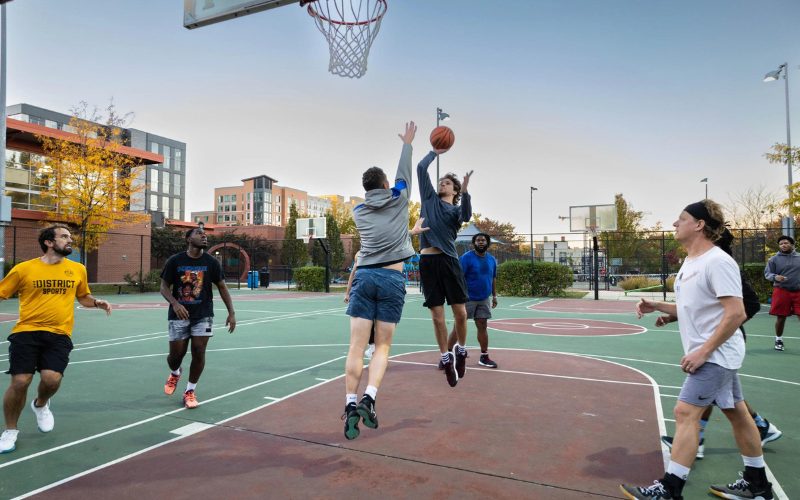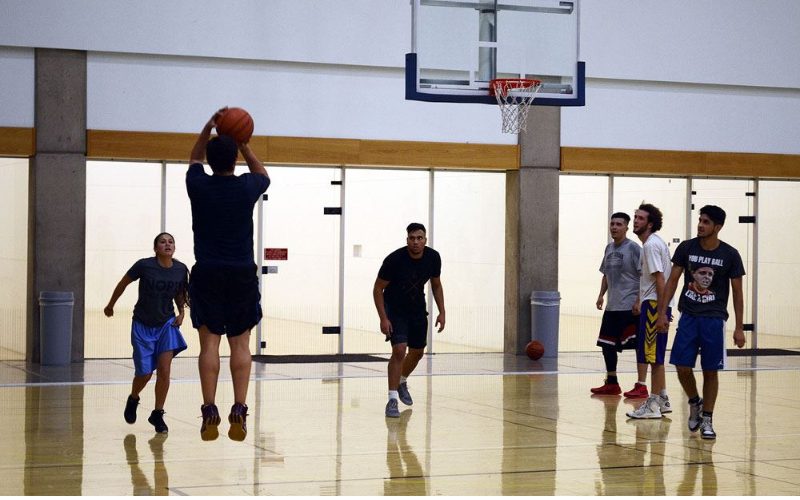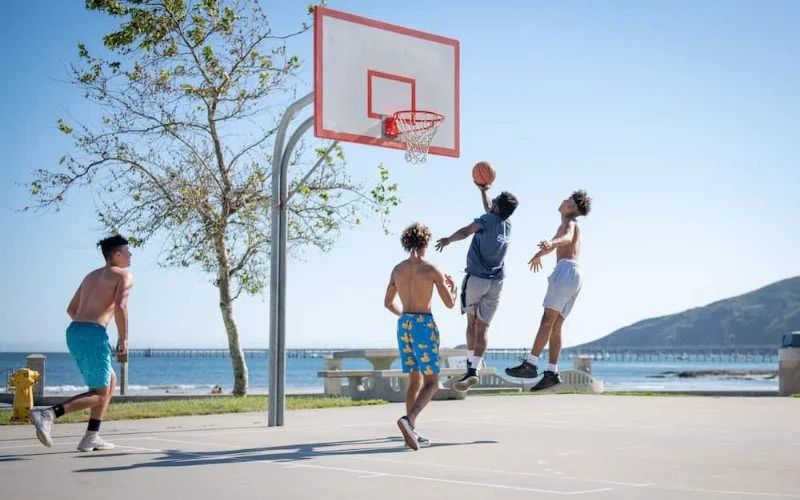Basketball is a fun and challenging game, and it gets better if you play with friends and family.
However, this game can quickly become competitive and intense. When there is a tie between two teams or players, you ask, “can basketball end in a tie?”
This article answers this question and provides an overview of basketball rules. We also cover some interesting facts about how ties are handled in professional basketball games.
Basketball Rules
The rules of basketball can vary, and they depend on many factors. The rules of a professional basketball game will differ from that of college or high school basketball and may also differ in different regions of the world. This section covers the basic rules of basketball that you can use for any friendly game in your yard.
- There can only be five players for each team.
- The team with the highest score wins.
- The ball can only be advanced by dribbling or passing. Dribbling is not allowed when a player puts two hands on the ball when not catching. You can only pass or shoot the ball in this situation.
- Each team has a maximum of 24 seconds to make a shot at the hoop.
- Players trying to make a shot are called the offence, while players trying to block the shots are called the defence. The defence blocks or prevents a shot from being made.
- After a team makes a shot, you should release the ball to the opposing team.
- Fouls will enable a player that has been fouled to make an unopposed shot.
- Some violations in basketball include double dribbling, travelling, goaltending, and backcourt violation.
Can Basketball End In A Tie?

No. a basketball game cannot end in a tie. An additional five minutes is added if a tie is attained at the end of a game. It continues until one team eventually obtains the highest score. The time added to a basketball game to dissolve a tie is called overtime.
What Is Overtime?
Overtime is an additional period if a basketball game is connected at the end of regulation. Every overtime lasts five minutes, and just like at the beginning of every game, overtime kicks off with the ball being thrown at mid-court.
In most basketball games that end in a tie, one overtime usually settles the scores, but other games may need more, and there is no limit to the number of overtime in a game.
Rules Of Overtime
To understand how overtime works properly, you will need an overview of the rules that tells you what applies to overtime in different situations.
Foul
In basketball, shooting fouls lead to free throws, but a non-shooting foul leads to the opposing team starting a play from one of the boundary lines.
When three non-shooting fouls are committed during overtime, the opposing team earns a free throw, and when these fouls exceed three, the opposing team gets two free throws.
If a foul is not committed in the first three minutes of overtime, a pass is given to one non-shooting foul without the opposing team earning a free throw.
Coach’s challenge
for every basketball game, each team is entitled to just one coach challenge, and if it has yet to be used at the end of regulation, you can use it over time.
During the last two minutes of overtime, you cannot use a coach challenge effectively as it no longer applies to a called goaltending or an out-of-bounds violation.
Each team gets two timeouts during overtime.
Instant Replay
Instant replay refers to a situation where the referee is unsure about what happens at a specific point of the game, and a replay is needed for clarification. If the following occurs, you will need an instant repeat in the last two minutes of overtime.
- Determining if prohibited contact was made during a block
- Finding out if goaltending or out-of-bound violation was called appropriately
- To determine if a shot made correlates with the shot clock
- Knowing what teams deserve an out-of-bounds call
It is essential to know that these rules mainly apply to professional games.
Basketball Games That Ended In A Tie

Several times in basketball history, a game ended in a tie. In these games, overtime was required, as shown in the descriptions below.
- On February 9, 1918, in a game between Kentucky Wesleyan and the University of Kentucky, an incorrect late-game foul was called, and the winning team, which was initially Kentucky Wesleyan (22-21), lost a point which led to a tie (21-21) between the two teams.
- On February 4, 1949, a game between Planeview High and Augusta High ended in a tie (27-27) after a referee’s error led to the initial winning (Augusta High) losing a point.
- On February 19, 2014, Winston-Salem State and Johnson. C. Smith competed against each other and ended up with a tie at 76. Due to an accident that occurred, the game could not continue that night. Two days later, the game was held overtime to settle the score. Forty hours later, the game ended, and the winning team was declared.
While multiple basketball games have ended with a tie and have gotten resolved, some of these ties take more than usual to get called off. It usually implies that more overtime is needed.
- Indianapolis Olympians Vs Rochester Royal (January 6, 1951) required six overtime to settle the score
- Bradley vs Cincinnati college basketball game (December 21, 1981) required seven overtime to call the game off
- Boone Trail High vs Angier High (February 29, 1964) took 13 overtime to declare a winning team.
Conclusion
Ties in a basketball game are neither a usual occurrence nor a rare one. However, you should know that a basketball game never ends with a tie.
Overtime which lasts for five minutes, is declared when a tie occurs, and when the tie is not resolved within this period, another overtime is added, and it continues that way.
Helpful Links:
- How Much Weight Can a Basketball Hoop Hold
- Does Walmart Sell Badminton Sets
- Backyard Horseshoe Rules
- Does Walmart Sell Croquet Sets
- How to Throw a Slider
This article covers the rules of basketball and the rules of overtime. We have also highlighted some of the games in basketball history where a tie occurred and some of the most extended overtime.
Follow us on Facebook, Instagram, and Pinterest.

